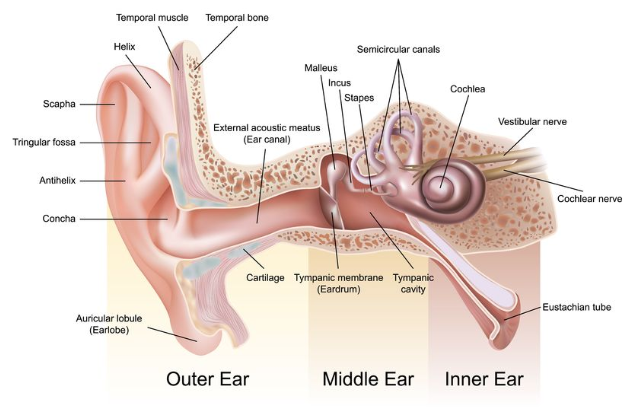Otosclerosis and stapes surgery: understanding the procedure
Otosclerosis is a condition in which the bones in the middle ear become stiff and lose their ability to transmit sound to the inner ear effectively. This results in a progressive hearing loss, which can be treated with stapes surgery. Stapes surgery is a minimally invasive procedure that involves removing the stapes bone and replacing it with a prosthetic device. The goal of the surgery is to restore as normal hearing as possible and reduce the need for hearing devices.
A stapedectomy is a common surgical procedure performed by an ear, nose and throat (ENT) specialist for people with otosclerosis, a condition in which abnormal bone growth in the middle ear interferes with the movement of the bones that transmit sound to the inner ear. A stapedectomy is a procedure that involves removing the stapes bone in the middle ear and replacing it with a prosthetic device to restore hearing. In this article, I will outline what occurs during the surgery, how long recovery takes, and what to expect during the recovery process.
Stapes bone in the middle ear
Stapes surgery removes the stapes bone and replaces it with a prosthetic device.
Prior to surgery an experienced Audiologist will perform a diagnostic evaluation of an individuals hearing ability to provide a baseline measurement of their hearing. This is important for the original diagnosis to support the ENT, but also for measuring the success of the procedure.
Stapes surgery is performed under general anesthesia and typically takes between one and two hours to complete. During the procedure, the ENT surgeon makes a small incision in the eardrum and removes the stapes bone. The prosthetic device is then placed in its place, and the incision is closed. The surgery is usually performed on an outpatient basis, and patients can go home the same day.
The recovery process after stapes surgery typically takes several weeks. During this time, patients may experience some discomfort and pain in the ear. It is important to follow the instructions provided by the surgeon, including taking pain medication as directed and avoiding activities that could cause trauma to the ear, including loud noise.
Most patients can return to normal activities within a week or two after the surgery, but it may take several months for the ear to fully heal. During this time, it is important to protect the ear from trauma and to avoid activities that could cause water to enter the ear, such as swimming.
The success of stapes surgery is typically evaluated by a hearing test several weeks or months after the procedure. If the hearing test shows a significant improvement in hearing, the surgery is considered successful.
After the surgery, it is important to take care of your ear and to follow the instructions provided by the ENT surgeon. This may include avoiding activities that could cause trauma to the ear, such as playing contact sports, and avoiding activities that could cause water to enter the ear, such as swimming. Additionally, it is important to avoid exposing the ear to loud noises, which can damage the delicate structures in the middle ear and cause hearing loss.
Otosclerosis and stapes surgery is a common procedure that can restore hearing in patients with otosclerosis. The recovery process typically takes several weeks, and it is important to follow the instructions provided by the surgeon to ensure a successful outcome. If you have any questions or concerns about the procedure, please do not hesitate to discuss them with your Audiologist or ENT surgeon.
Related reading

